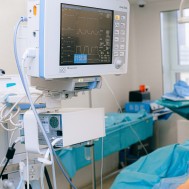The COVID-19 pandemic created an exponential demand for ventilators. For every medical device, a rubber seal can make the difference of application success and failure —and in many cases, life or death. Seal selection during this time is critical, and choosing the right medical seal to meet application requirements should never waver.
Here’s a closer look at how to find the best medical seal for ventilator applications.
Medical Seals Need to be Compatible with Their Environment
Ventilators supply circulated room air, pure oxygen, or a ratio of the two to patients unable to breathe on their own. Medical seals applied to ventilators need to be compatible with excessive air and pure oxygen exposure without hardening or cracking over time. Any air that passes through the ventilator will come in contact with both the seal and the patient. Therefore, materials used for medical seals should not contain any volatile substances that could evaporate out of the seal and into a patient’s lungs.
Every medical grade elastomer should be tested to FDA USP Class VI or ISO 10993 test standards. At Apple Rubber, every medical seal used in ventilators and other medical applications are processed in our Class 10000 ISO-07 cleanroom. Our cleanroom provides heightened quality assurance and full lot traceability to ensure every seal will help keep patients safe.
The Best Materials Recommended for Ventilators
Material selection is key in providing a seal that can withstand critical environments and won’t fail under pressure. Every seal should be biologically compatible with the materials it’s sealing against, as well as with patients. The best materials for ventilator applications include:
Medical Grade Silicone: This material is a self-lubricating elastomer that is inert, which means it does not promote microbial growth. It can fulfill class VI or ISO 10993 requirements, as well as withstand sterilization with gamma, etO and steam. Additionally, this elastomer is resistant to most cleaning agents used in medical applications.
Medical Ethylene Propylene (EPDM): EPDM is able to resist many acids and solvents typically used in medical applications. Additionally, this elastomer is compatible with all silicone-based lubrication fluids that may be applied to the seal. EPDM is typically used for o-rings and oxygen valves that may be applied to ventilators, as well as lip seals and insulin pumps for other medical applications.
In critical times, it’s more important than ever that medical seals perform under pressure. Apple Rubber is proud to provide trusted, quality sealing solutions for ventilators and other critical medical applications.
Want to learn more about medical seals?
Contact an engineer today.
